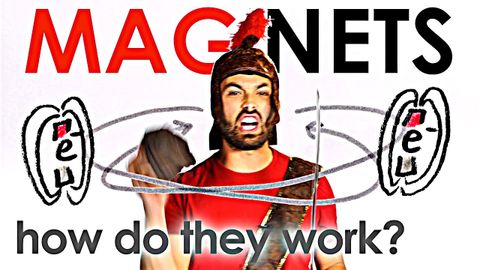磁石。它們是如何工作的? (MAGNETS: How Do They Work?)
VoiceTube 發佈於 2021 年 01 月 14 日  沒有此條件下的單字
沒有此條件下的單字- v.t.放;放置;認為...重要;表達
- phr. v.(put sth out) 關 (燈) ; 撲滅 (火) ; 熄滅 (香煙)
- v.t.地點;安置,放置;排名;下訂單;辨認出
- n. (c./u.)位置;位置;處境;城鎮
- n.(知識)領域;專業;田野;場地;球場;戰場;欄位;場
- v.t.巧妙地回答;接(球);派…上場;接球
- adj.野外的
- n. (c.)籌碼;切片;一件;作品;棋子;證據;樂曲
- v.t.片

